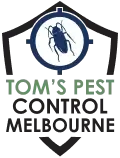Prompt, Affordable Same-Day Pest Control in Melbourne – From $129.
- Home
- Pest Treatments
- Termite Inspection & Treatment
- Ant Pest Control
- Bed Bug Treatment
- Beetle Pest Control
- Bird Proofing
- Borer Pest Control
- Cockroach Control
- Flea Treatment
- Fly Control
- Fox Trapping
- Mites Control
- Mosquito Pest Control
- Moth Control
- Possum Removal Service
- Rodent Control
- Silverfish Treatment
- Spider Control Treatment
- Wasp Control Services
- End of Lease Pest Control
- Commercial Pest Control
- Office Pest Control
- Restaurants & Cafes Pest Control
- Hospitality Pest Control
- Education Facilities Pest Control
- Hospital & Aged Care Pest Control
- Pest Control Food Industry
- Factories & Warehouses Pest Control
- Government Buildings Pest Control
- Assets & Facilities Pest Management
- Farming and Agriculture Pest Control
- Strata Pest Control
- Construction Pest Control
- Termites
- Pest Info
- Pest Inspections
- Contact
- Home
- Pest Treatments
- Termite Inspection & Treatment
- Ant Pest Control
- Bed Bug Treatment
- Beetle Pest Control
- Bird Proofing
- Borer Pest Control
- Cockroach Control
- Flea Treatment
- Fly Control
- Fox Trapping
- Mites Control
- Mosquito Pest Control
- Moth Control
- Possum Removal Service
- Rodent Control
- Silverfish Treatment
- Spider Control Treatment
- Wasp Control Services
- End of Lease Pest Control
- Commercial Pest Control
- Office Pest Control
- Restaurants & Cafes Pest Control
- Hospitality Pest Control
- Education Facilities Pest Control
- Hospital & Aged Care Pest Control
- Pest Control Food Industry
- Factories & Warehouses Pest Control
- Government Buildings Pest Control
- Assets & Facilities Pest Management
- Farming and Agriculture Pest Control
- Strata Pest Control
- Construction Pest Control
- Termites
- Pest Info
- Pest Inspections
- Contact
Subterranean Termites Control Melbourne
Home » Termite Facts & Identification » Subterranean Termites
What is Subterranean Termites?
Subterranean termites are known to cause severe damage to wooden structures. These pests have a huge appetite and build tunnels in the soil below your property.
They expand their tunnels from the soil to the wood in contact with it, thus getting access to your home. Subterranean termites can also build mud tubes from the soil on concrete foundations or through cracks and crevices in the foundation to gain access to the wooden structure in your home.
Once these pests build colonies on your property, they may chew through that wood to create more tunnels. This activity can weaken the structural integrity of your building in the long run.
Identification
Subterranean termites are about 1/8 to one inch long. They are creamy white to dark brown/black coloured termites with six legs and two straight antennae. Their bodies are long, narrow, and oval. The alates or swarmers of this species have wings.
Subterranean termites go from the egg stage to adults at different rates depending on their species. Every colony has one primary queen, which lays tens of thousands of eggs in her lifetime. This species has three primary castes – workers, soldiers, and reproductives, including the king, queen, swarmers, alate, nymphs and supplementary reproductives.
A new colony begins when the swarmers or winged alates fly out of the parent colony. The male and female swarmers get in a mating flight, after which they find a suitable place to build a new colony. Both sexes shed their wings after the mating flight and begin excavating a chamber in the ground that is near a wood source.
Swarming mostly takes place on days that are warm, sunny, and windless; however, some termites prefer to swarm at night.
Subterranean termites live in underground colonies, from where they begin building tunnels to find food. These pests make mud tubes above ground level and reach food easily. In addition, they are likely to occupy moist areas as they require moisture for survival.
These termites can cause extensive damage to your property. These termites can bite off tiny wood fragments as they have hard, saw-toothed jaws. Even a small colony of subterranean termites can have about 60,000 workers, eating about five grams of wood each day.
Over time, these termites’ activities can weaken a building’s structure and cause it to collapse completely. In addition, the colonies of this termite species can go undetected for years and grow exponentially, leading to expensive repair work.
Subterranean Termite Treatment
Professional pest control services can help identify and eliminate established subterranean termite colonies and prevent further infestations. These pests require specialised termite treatment methods that involve baits, traps, and various other safe yet effective chemical treatments.
Subterranean termite baits are designed to be slow acting, ensuring the entire colony is eradicated before any damage can be done. Chemical treatments, such as termiticides, can also be applied to wood surfaces to prevent further infestations. A professional pest control service should always perform subterranean termite control methods to ensure the most effective and safe results.
At Tom’s Pest Control, we inspect your property thoroughly to determine the level of infestation. Depending on our findings, we design a treatment plan for your home. We then carry out the extermination carefully to offer the best possible results without causing any harm to you, your family, or the environment.
Call Us Today
Speak to us today if subterranean termites have invaded your property.
Frequently Asked Questions
What Are Subterranean Termites?
Subterranean termites are the most damaging termite species. They build mud tubes for food sources and safeguard themselves from open air. These termites can eat wood throughout the day using their saw-toothed jaws.
What Are the Three Different Castes of Subterranean Termites?
- Worker termites – They find food and are responsible for all maintenance tasks. They create mud tunnels to safeguard the colony from dry environments. They also form a safe passage to acquire food to distribute to the other castes.
- Reproductive – The king, queen, and winged alates belong to this caste. The main goal of these termites is mating and creating new termites.
- Soldier termites – These termites defend the colony.
How Do Subterranean Termites Gain Access to My Home?
Subterranean termites typically enter homes through cracks and crevices in the foundation or through wood-to-ground contact. However, they can also come up from the ground through mud tubes that allow them to reach the upper floors of a structure.

